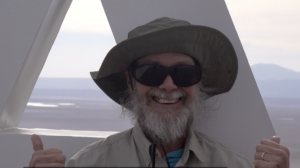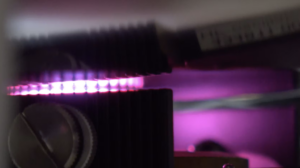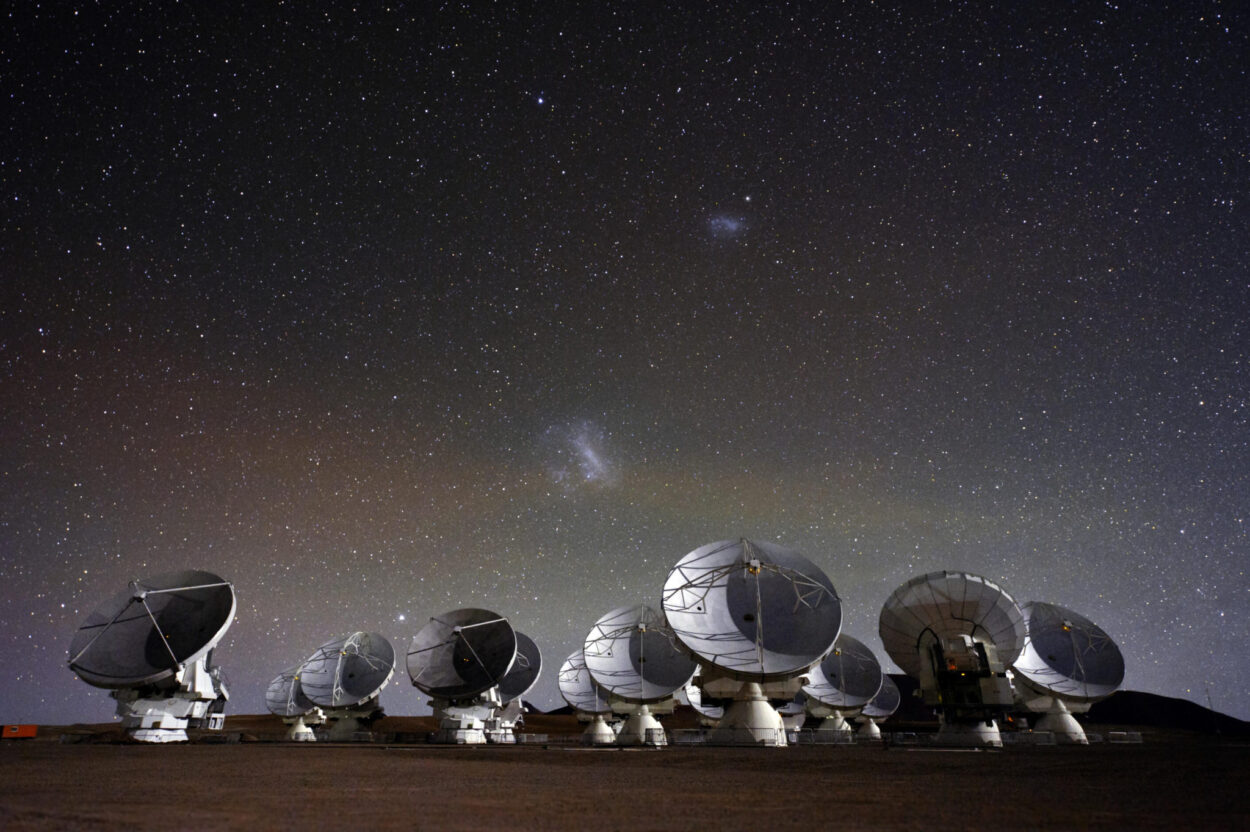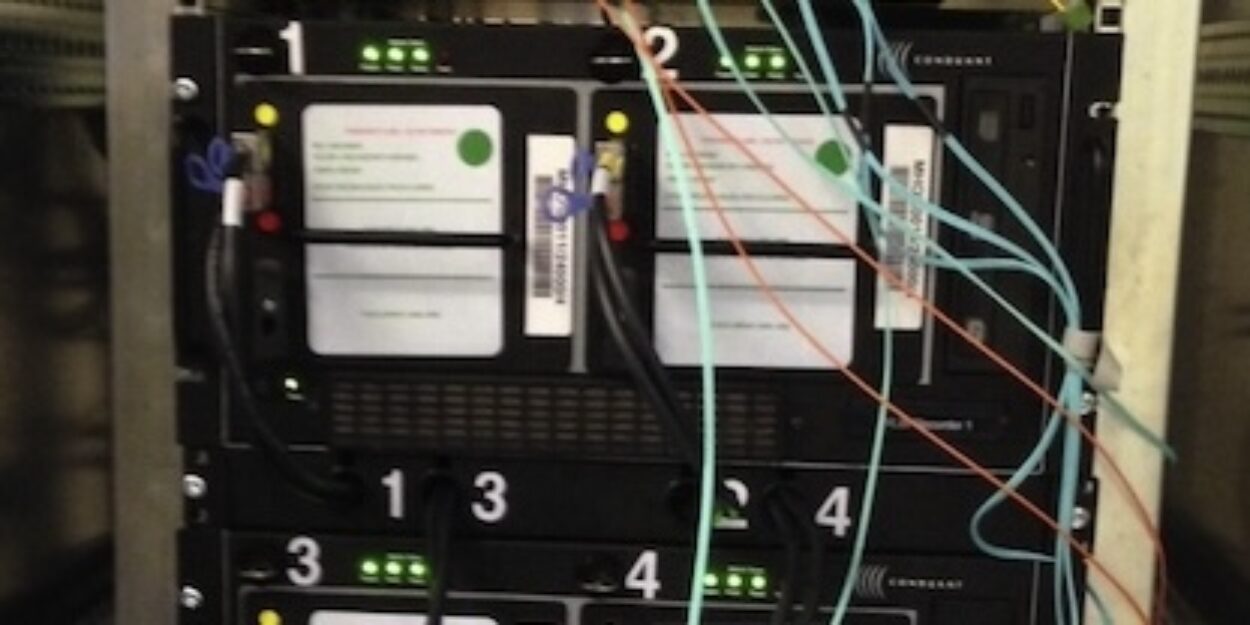Haystack Development Paves the Way for New Ultra-High-Resolution Studies of the Universe
For decades, MIT Haystack Observatory has been a world leader in developing and advancing the technique known as very long baseline interferometry (VLBI). Use of VLBI allows astronomers to combine signals received at radio telescopes around the world to create a virtual earth-sized telescope and capture images of astronomical objects with extraordinarily high angular resolution — that is, an increased level of detail for objects observed at great celestial distances.
In recent years, one of Haystack Observatory’s most impactful efforts in this field has been spearheading a series of VLBI development projects at the world’s most powerful millimeter-wavelength telescope, the Atacama Large Millimeter/submillimeter Array (ALMA) in the Atacama Desert of northern Chile.
VLBI that uses radio signals captured at these millimeter wavelengths provides even higher angular resolution than more traditional VLBI observations at centimeter wavelengths. But this advantage comes at the price of several daunting challenges. One is that water vapor in the earth’s atmosphere corrupts the signals reaching each telescope, effectively attenuating, or reducing, the signal. This effect becomes increasingly severe the shorter the wavelength. Thus dry, stable weather is critical for millimeter VLBI. In addition, most of the sources targeted by VLBI observations get fainter at millimeter wavelengths, meaning that more sensitivity is needed to detect them.
These are two of the reasons that ALMA is so important. Its location at a high-altitude site in the driest desert in the world helps to minimize the amount of water vapor present compared with many other observatories. And when phased together, the combined collecting area of its antennas makes ALMA the most sensitive millimeter telescope on the planet.
In 2019, astronomers unveiled the now iconic first image of the black hole at the heart of the nearby galaxy M87. That image — made using ALMA in conjunction with a worldwide network of radio telescopes known as the Event Horizon Telescope (EHT) — was the highest angular resolution image ever made using earth-based telescopes and the first to ever directly image a black hole on event horizon scales.
The ability of ALMA — with its unprecedented sensitivity — to function as a VLBI station and participate along with the other sites of the EHT, was crucial to the success of that experiment, and to a slew of other results that followed, including:
- Astronomers Unveil Strong Magnetic Fields Spiraling at the Edge of Milky Way’s Central Black Hole (EHT)
- First Sagittarius A* Event Horizon Telescope Results. I. The Shadow of the Supermassive Black Hole in the Center of the Milky Way (EHT)
- New black hole images reveal more detail and a larger ring (MIT Haystack News)
These results made clear that equipping ALMA for VLBI has opened an exciting new window on the workings of our universe.
Haystack astronomers have continued to conceive new ways to push ALMA further still by applying the technique of millimeter wavelength VLBI to new types of targets and a wider range of science questions.
“ALMA’s VLBI capabilities clearly revolutionized our ability to study the event horizon–scale physics around black holes. But there is a lot more exciting science to come,” says Lynn Matthews, an astronomer at MIT Haystack Observatory and principal investigator of the latest VLBI development project at ALMA, known as the ALMA Phasing Project Phase 3 (APP3). “I’m particularly excited to see what we will find by observing spectral lines from molecules at millimeter wavelengths with VLBI resolution. Measurements like that will allow us to see how material is moving near the centers of galaxies, or in the atmospheres of dying stars, and also lets us learn about their chemistry, density, and temperature.”

Spectral line VLBI has never been done before at wavelengths shorter than about 2 mm—until now. As part of APP3, Matthews, along with Haystack research scientist and APP3 software lead Geoff Crew, worked to develop and commission a spectral line VLBI capability at ALMA, which was offered to the community for the first time in 2023.
Meanwhile, other scientists are racing to push the VLBI technique to ever shorter wavelengths (below 1 mm) in hopes of seeing ever-finer detail of the material spiraling around black holes. Thanks to APP3, ALMA is now ready for this new challenge: tests by the APP3 team recently showed that ALMA could operate as a phased array at wavelengths as short as 0.4 mm.
“The atmosphere makes observing at such short wavelengths extremely difficult, but the reward would be record-breaking angular resolution,” says Vincent Fish, astronomer and VLBI expert at MIT Haystack Observatory, who also plays a leading role in data management and scheduling for the Event Horizon Telescope’s annual VLBI campaigns in partnership with ALMA.
In parallel with all of these new developments, another facet of keeping ALMA’s VLBI capabilities on the cutting edge is ensuring that all of the specialized hardware needed to enable VLBI stays healthy, since even small glitches can make or break an experiment. That means repairing or replacing components as needed to keep everything functioning nominally.

For example, one of the most recent efforts was replacement of a device known as a hydrogen maser, which is at the “heart” of its VLBI capabilities, providing an ultra-precise frequency standard necessary to enable accurate tuning of the receivers and synchronization of the signals at ALMA with those received at other telescopes. Plus while it is operating, it emits a groovy purple glow! Light of this unique color is emitted when molecular hydrogen (consisting of two hydrogen atoms bonded together) is broken up (“dissociated”) into individual atoms.
“As the ALMA array must be able to operate year-round, reliability is a key requirement, especially for single-point failure items,” notes Christophe Jacques, an engineer at the National Radio Astronomy Observatory. “Because the hydrogen maser provides the absolute timing reference for the entire array, and is the crucial link to other telescopes for VLBI operations, the acquisition of a second clock unit was deemed essential. ALMA now has two active hydrogen masers.”
That installation of the new maser took place in November 2023, with assistance from Geoff Crew. Nico Lira, a communications and outreach specialist from the Joint ALMA Observatory, was also on site and worked with the Haystack team to create a short documentary of the installation process and the integration of the maser with ALMA’s other VLBI components.
With the new maser in place and the upgraded capabilities that MIT researchers have recently enabled, ALMA is poised to continue at the forefront of VLBI exploration.
“APP3 completed the effort of providing ALMA with all the tools needed to spur the EHT into other investigations that are now possible to explore the millimeter VLBI window fully open on the universe,” says Crew. “I can’t wait to see what unexpected discoveries come next.”

